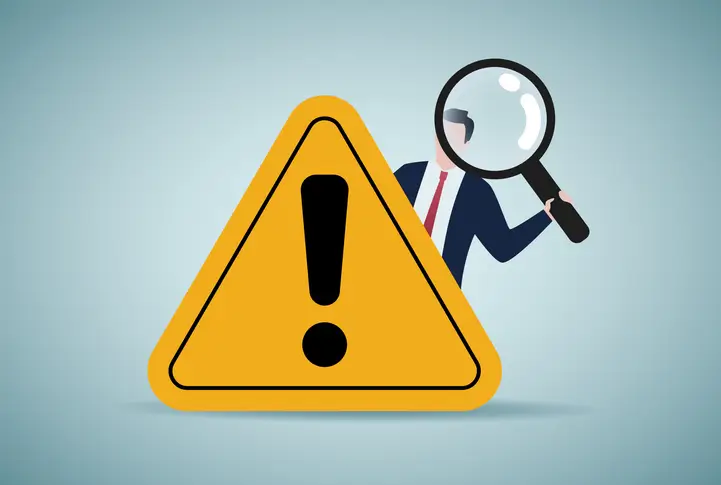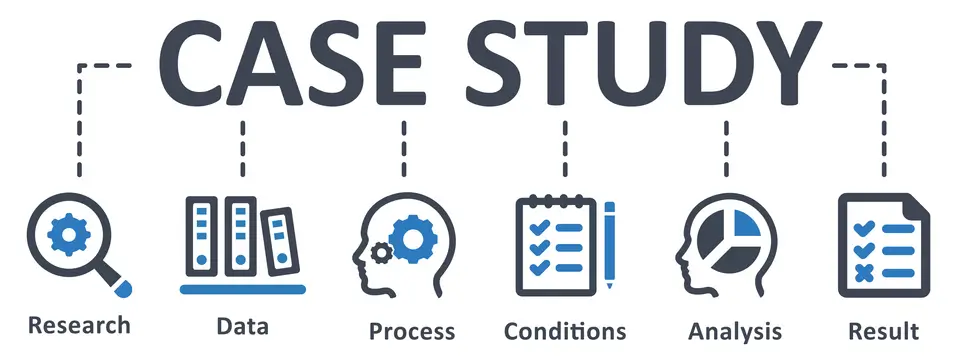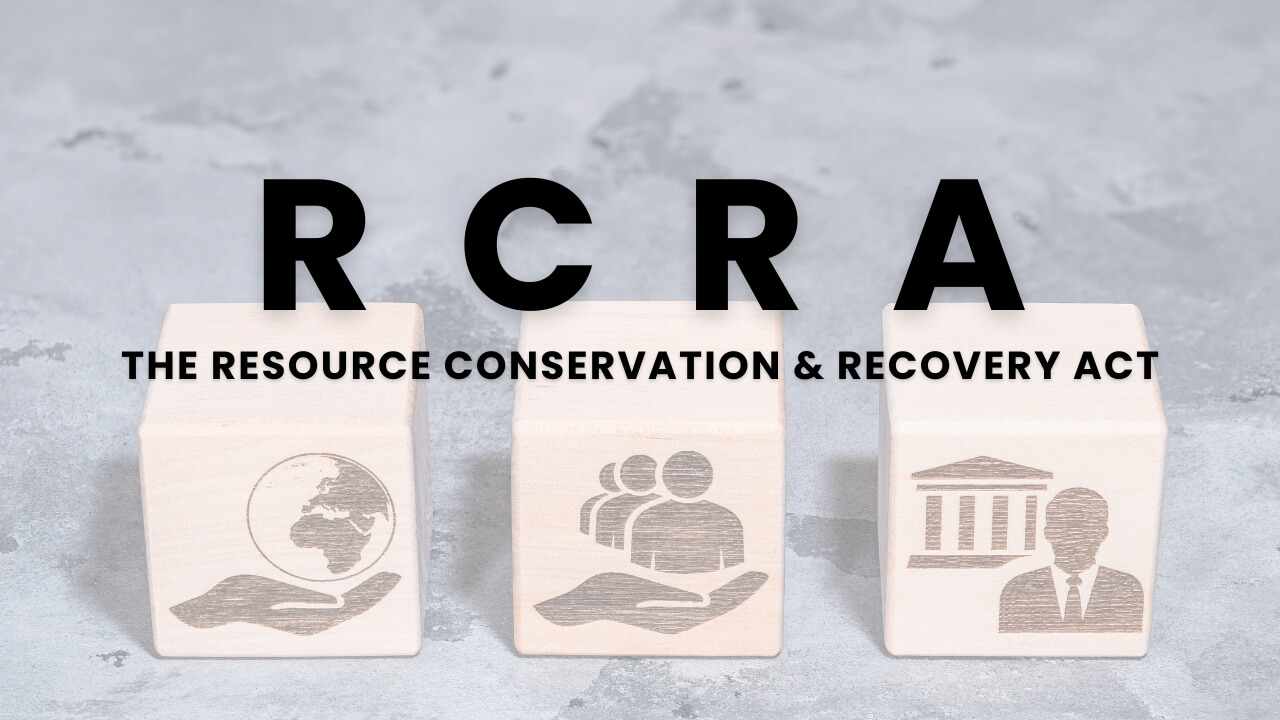What does RCRA Stand for?
RCRA stands for Resource Conservation and Recovery Act. It was enacted in 1976, marks a pivotal moment in regulating hazardous waste and environmental protection in the United States. Its primary objectives are to protect human health and the environment from potential hazards of waste disposal, conserve energy and natural resources, reduce the amount of waste generated, and ensure that waste is managed in an environmentally sound manner. Over the decades, RCRA has significantly influenced waste management practices, adherence behaviors, and environmental quality nationwide.
What is the RCRA’s Background
RCRA was introduced as a response to the growing concerns over the handling and disposal of hazardous waste. Prior to its enactment, waste management practices were largely unregulated, leading to widespread contamination and adverse health effects. RCRA primary goals include addressing this problem head on. The Act empowers the Environmental Protection Agency (EPA) to oversee the generation, transportation, treatment, storage, and disposal of hazardous waste, ensuring comprehensive cradle-to-grave management.
Impact of RCRA on Hazardous Waste Generation
Now that we understand why was the RCRA created, it is important to analyze its impact. Before the implementation of RCRA, the United States generated significant quantities of hazardous waste without stringent controls. Estimates suggest that almost 400 million tons of hazardous waste is produced annually. The lack of regulation led to indiscriminate disposal practices, posing severe risks to public health and the environment. Post-RCRA, the stringent regulations and oversight have resulted in a substantial reduction in hazardous waste generation.
According to the EPA, hazardous waste generation decreased by approximately 3.3 % due to RCRA regulations, highlighting the Act’s effectiveness in promoting waste minimization and safer disposal practices.

Reduction in Hazardous Waste
The introduction of RCRA has led to significant reductions in hazardous waste. The EPA’s data indicates that there has been a significant reduction in the volume of hazardous waste generated due to the stringent requirements and technological advancements prompted by RCRA. This reduction is a testament to the success of RCRA in encouraging industries to adopt cleaner production techniques and waste minimization strategies.
Regulatory adherence and Facilities
RCRA regulates over 40,000 facilities across the United States, encompassing various industries and waste management operations. These facilities are required to adhere to strict guidelines for hazardous waste management, from generation to final disposal. adherence rates among these facilities have steadily improved, with the EPA reporting a adherence rate of over 90% among regulated entities. This high adherence rate underscores the effectiveness of RCRA training courses and the commitment of industries to adhere to environmental regulations.
Enforcement and Penalties Under RCRA
The Resource Conservation and Recovery Act (RCRA) empowers the Environmental Protection Agency (EPA) to enforce regulations on hazardous waste management. This enforcement is crucial to ensuring adherence and protecting public health and the environment from the risks posed by improper waste handling. Between 2010 and 2020, the EPA took over 10 enforcement actions against facilities violating RCRA regulations, resulting in significant penalties and corrective actions. These enforcement actions serve as a deterrent, emphasizing the importance of adhering to hazardous waste regulations.

EPA Enforcement
The Federal Facility adherence Act (FFCA) clarified the EPA’s authority to impose civil penalties on federal facilities for violations related to solid and hazardous waste and underground storage tanks (UST). These penalties are significant and include several key provisions. adherence orders under §3008(a) (3) can result in fines of up to $37,500 per day of nonadherence for each violation of Subtitle C requirements. If corrective actions are not taken within the specified time, violators face similar daily penalties under §3008(c), and the EPA may suspend or revoke permits.
Violations of any Subtitle C requirement can incur penalties of up to $37,500 per violation under §3008(g). Non-adherence with interim status corrective action orders under §3008(h) (2) also leads to daily penalties of up to $37,500. For UST adherence orders, failure to adhere can result in fines up to $37,500 per day under §9006(a)(3), and specific violations related to UST notification and adherence can incur penalties up to $16,000 per tank per day under §9006(d)(1) and §9006(d)(2).
Criminal Enforcement
In addition to civil penalties, RCRA authorizes criminal enforcement for severe violations. Knowing violations of permit conditions can lead to fines of up to $50,000 per day and/or two years of imprisonment, with doubled penalties for repeat offenses. Endangering others can result in fines up to $250,000 and/or 15 years imprisonment.
Emergency Authority
Under §7003(a), the EPA has the authority to take emergency actions against any person contributing to the handling, storage, or disposal of hazardous waste that poses an imminent danger. The EPA can seek court orders to stop such activities and mandate necessary corrective actions. Non-adherence with these orders can result in fines of up to $7,500 per day.
State, Tribal, and Citizen Enforcement
Under RCRA, states authorized to administer hazardous waste programs can take the enforcement lead, though the EPA retains independent enforcement authority. While RCRA does not authorize tribal enforcement, tribes can create their waste management programs under tribal law. Citizens can file civil actions against federal agencies or the EPA for RCRA violations, but not if the EPA or state is already prosecuting a adherence case.
Environmental Benefits and Pollution Reduction
Areas with high adherence rates under RCRA have witnessed significant reductions in pollution levels. Studies have shown a decrease in soil and groundwater contamination in regions with stringent RCRA enforcement. For instance, the EPA’s corrective action program has successfully cleaned up over 18,000 contaminated sites, mitigating risks comparable to Superfund sites. This cleanup effort has significantly improved environmental quality and reduced health hazards associated with hazardous waste exposure.
Health Impact and Public Awareness
The reduction in hazardous waste and improved waste management practices under RCRA have led to a notable decrease in health issues related to hazardous waste exposure. Communities near high-adherence facilities have reported fewer incidents of respiratory problems, skin conditions, and other health issues linked to hazardous waste. Additionally, public awareness of RCRA and its purpose has increased, with surveys indicating that over 70% of the population is aware of RCRA and its role in environmental protection.
Economic Impact and Cost Savings
adherence with RCRA regulations entails costs for businesses, including investments in waste management infrastructure and personnel training. Estimates suggest that the average cost of RCRA adherence for bulk chemotherapy waste is $1.25, and hazardous waste is $2.40 per pound. However, these costs are offset by significant savings achieved through waste reduction and recycling programs encouraged by RCRA. Many businesses have reported substantial savings by adopting more efficient waste management practices and reducing their reliance on raw materials.
Financial Penalties and Incentives
The EPA has collected millions of dollars in financial penalties from non-compliant facilities, which are used to fund further environmental protection initiatives. These penalties not only serve as a deterrent but also provide a financial incentive for facilities to adhere with RCRA regulations.
Community Involvement and Public Comments
RCRA has developed greater community involvement in waste management decisions. The EPA actively seeks public comments on RCRA-related decisions, ensuring that community concerns are addressed. Over the years, thousands of public comments have been submitted, reflecting the growing interest and involvement of communities in hazardous waste management.

Case Studies and Success Stories
Several companies and municipalities have successfully reduced waste and complied with RCRA regulations, serving as exemplary models. For instance, a manufacturing facility in California reported a 60% reduction in hazardous waste generation after implementing RCRA-compliant waste management practices. Similarly, a municipality in Texas achieved a 50% increase in recycling rates by adopting RCRA guidelines and engaging the community in waste reduction initiatives.
Improvements in Environmental Quality
The positive impact of RCRA on environmental quality is evident in areas with high adherence rates. Studies have shown improved air and water quality, reduced soil contamination, and enhanced biodiversity in these regions. These improvements underscore the effectiveness of RCRA in protecting the environment and promoting sustainable waste management practices.
State and Regional Comparisons
The effectiveness of RCRA varies across states and regions, depending on the level of enforcement and adherence. States with robust RCRA enforcement have reported better hazardous waste management outcomes and lower pollution levels compared to those with less stringent enforcement. This regional variation highlights the importance of consistent enforcement and adherence to RCRA regulations.
International Comparisons
RCRA’s impact extends beyond the United States, serving as a model for hazardous waste management globally. Countries with similar regulations have reported comparable improvements in waste management practices and environmental quality. For instance, the European Union’s Waste Framework Directive, inspired by RCRA, has achieved significant reductions in hazardous waste generation and increased recycling rates across member states.
The Role of RCRA Training and Certification
Central to the success of RCRA is the emphasis on training and certification. RCRA training courses are essential for ensuring that personnel involved in hazardous waste management are knowledgeable about regulatory requirements and best practices. Online options for RCRA training have made it more accessible for individuals and organizations to obtain the necessary RCRA certification.
These online RCRA training programs cover critical aspects of hazardous waste management, including waste identification, storage, transportation, and disposal. By equipping individuals with the necessary skills and knowledge, these RCRA training courses play a vital role in promoting adherence and safeguarding the environment.
Conclusion
The Resource Conservation and Recovery Act (RCRA) has profoundly impacted environmental protection and waste management in the United States. Since its enactment, RCRA has driven significant reductions in hazardous waste generation, improved regulatory adherence, and enhanced environmental quality. The stringent regulations and enforcement actions under RCRA have mitigated pollution, reduced health risks, and promoted sustainable waste management practices.
Furthermore, the emphasis on RCRA training and certification has ensured that individuals and organizations are well-equipped to adhere with regulatory requirements. As a result, RCRA stands as a cornerstone of environmental protection, demonstrating the critical role of robust regulations in safeguarding human health and the environment.
Looking ahead, continued adherence to RCRA regulations and ongoing advancements in waste management technologies will be essential for addressing emerging environmental challenges. By building on the successes of RCRA and developing a culture of adherence and sustainability, we can ensure a cleaner, healthier, and more sustainable future for generations to come.









